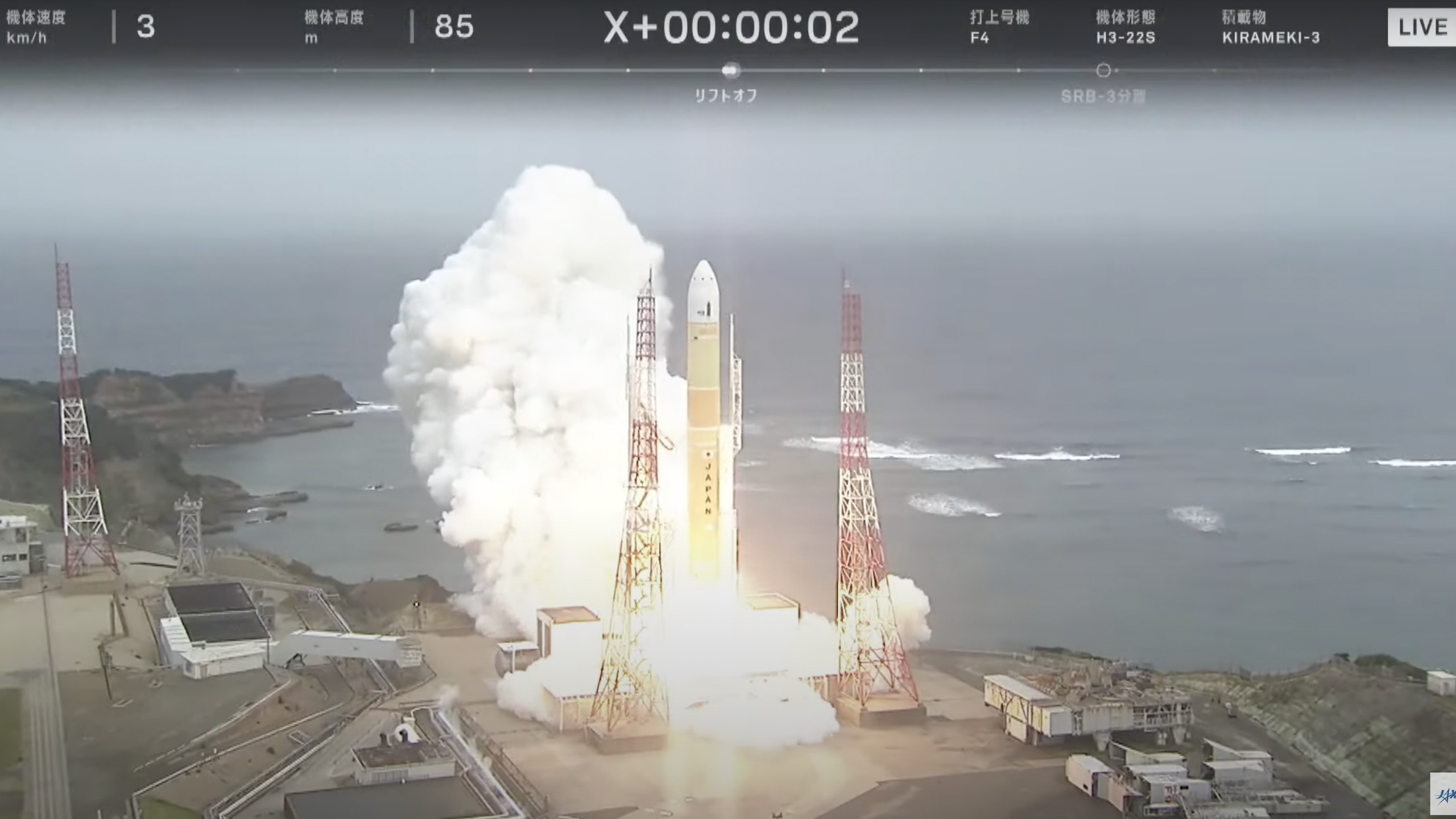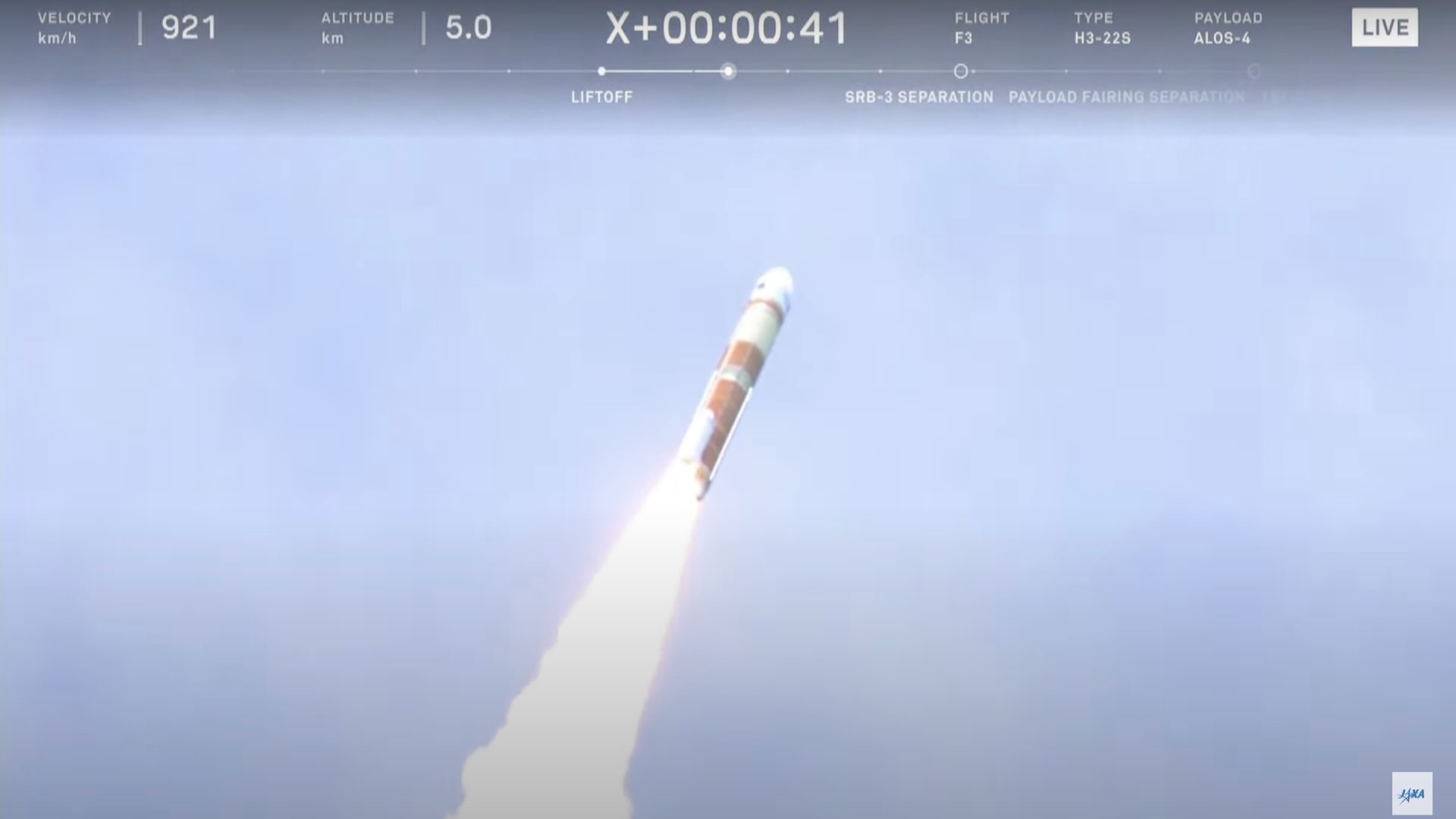Japan's new H3 rocket flew for the fourth time ever on Monday morning (Nov. 4).
The H3 launched Kirameki 3, a military communications satellite also known as DSN-3, from Tanegashima Space Center on Monday at 1:48 a.m. EST (0548 GMT; 3:48 p.m. local Japan time).
The flight was apparently a success: Kirameki 3 deployed at about 29 minutes after liftoff as planned, eliciting cheers and handshakes in mission control, as seen in the launch webcast by the Japan Aerospace Exploration Agency (JAXA).

The two-stage H3 is Japan's new workhorse medium-lift rocket, the successor to the H-2A, which is about to retire after more than two decades of service. The H-2A has just one mission left, and it's expected to lift off before the end of the year.
The H3, which was developed by JAXA and Mitsubishi Heavy Industries, debuted in March 2023, about three years later than originally planned.
That first launch failed, resulting in the loss of the payload — the Advanced Land Observing Satellite-3 (ALOS-3, also known as DAICHI-3).
Related: Japan's new H3 rocket fails on 1st test flight, advanced Earth observation satellite lost
Get the Space.com Newsletter
Breaking space news, the latest updates on rocket launches, skywatching events and more!

The rocket's next two flights were successful, however. This past February, the H3 carried a 5,900-pound (2,600 kilograms) mass simulator to orbit and also successfully deployed two small Earth-observation satellites.
Then, on June 30, the rocket delivered the ALOS-4, or DAICHI-4, Earth-observation satellite to low Earth orbit as planned.
Monday morning's launch targeted a more distant destination — geostationary orbit, which lies 22,236 miles (35,786 kilometers) above Earth. At this altitude, satellites complete one orbit in exactly one Earth day, meaning that satellites in geo "hover" over the same patch of the planet continuously.
According to NextSpaceflight.com, Kirameki 3 will be operated by DSN Corporation and "will be used for military communications by the Japanese military." The satellite will communicate in the X band, part of the microwave region of the electromagnetic spectrum.
Join our Space Forums to keep talking space on the latest missions, night sky and more! And if you have a news tip, correction or comment, let us know at: community@space.com.

Michael Wall is a Senior Space Writer with Space.com and joined the team in 2010. He primarily covers exoplanets, spaceflight and military space, but has been known to dabble in the space art beat. His book about the search for alien life, "Out There," was published on Nov. 13, 2018. Before becoming a science writer, Michael worked as a herpetologist and wildlife biologist. He has a Ph.D. in evolutionary biology from the University of Sydney, Australia, a bachelor's degree from the University of Arizona, and a graduate certificate in science writing from the University of California, Santa Cruz. To find out what his latest project is, you can follow Michael on Twitter.









